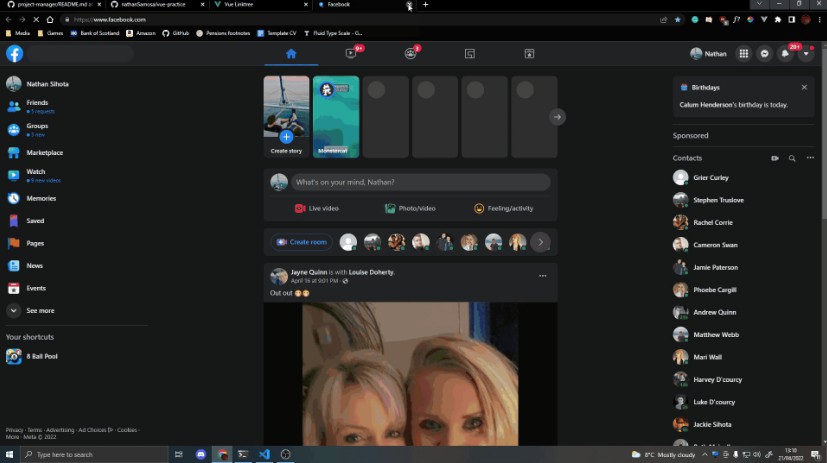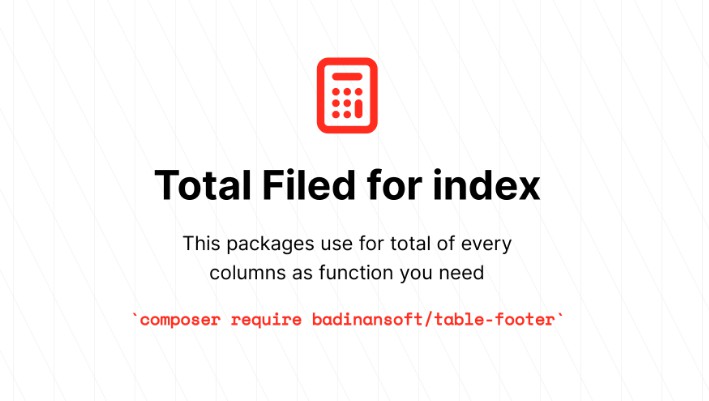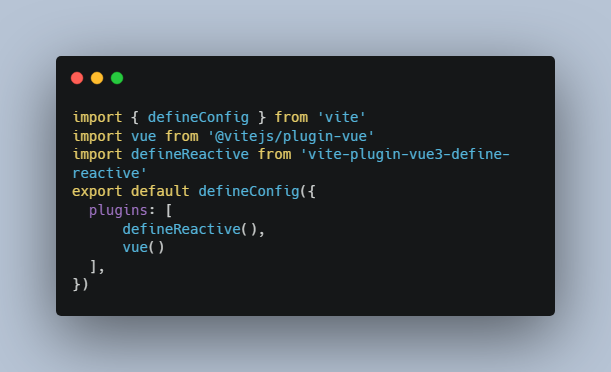Vue practice
After finishing an intensive 6 month full-stack course that used React for the front-end, I have spent some time studying Vue and its differences from React.
Todo list
After creating my first Hello World, counter and responsive webpage I followed a guide on building a Todo list, utilising a store to call actions and mutations on global state. Here I also learned about conditional rendering and using axios to fetch data from an API, and in the future, a server.
IMDb game
Next I built my own app using my todo project as a reference, this time utilising the IMDb api to create a game. Here I focused my learning on the differences between methods and computed, and the pros and cons between using local data or the global store in different scenarios. I leaned heavily into conditional rendering, and utilised a persistedState plugin to hold high scores between window reloads.
Linktree clone
My main point of improvement with the IMDb game was that I never split the app into more managable components. For my next project, a Linktree clone, I learned a lot about using watch and emit to call methods across components. This was super effective in making my code scalable and easier to read, as I was previously going through the global store for the same result. Watch also taught me a lot about different ways to keep an app responsive as it scales, as a similar effect in React would require a specific update function to be called at the end of each store change in order to trigger, rather than efficiently watching specific data for changes.
Up until now, I was ignoring css as I wanted to spend as much time as possible learning a new language. However I was confident enough in my app to move towards styling. I learned a lot about scoped/global styles, and the pros and cons between writing the styling directly into a component or importing it from an assets directory.
Calendar
Once I was happy with my progress on the Linktree clone, I moved onto a calendar app to learn some new features of Vue. Here I learned about the advantages of mixins to store utility functions that can be called across components. I also learned about and utilised created to call these mixin methods once the component is initialised.
Although this project is set up to map stored data across each date of the calendar and render different months at the call of a function, I moved on from this as I was spending most of my time writing and troubleshooting javascript rather than studying vue. This is a project I plan to come back to and expand upon, adding a daily tasks column that renders when a cell on the monthly calendar is clicked, having styled tools to display different data formats on the monthly calendar, and the usual CRUD functionalities of a data managment tool.
Wordsearch
Finally, I finished off my inital studies with a wordsearch builder. Utilising another API to fetch words related to a topic the user can input, a random wordsearch is generated. Expanding on what I learned from the calendar project, I also implemented utilities to configure parameters such as requirements for forms and bounds for the wordsearch grid. Again, I sacrificed styling to focus my learning on vue itself, as this fealt like the most efficient use of my time.
This project is also a nice personal one to me, so I plan to finish it as well. The next step will be to allow the words listed to be toggable between found/hidden, and allow the user to draw boxes around words they have found. I have a few ideas on how to do this with vanilla Vue, as the calculations for different directions words can go in already exists in a mixin.



